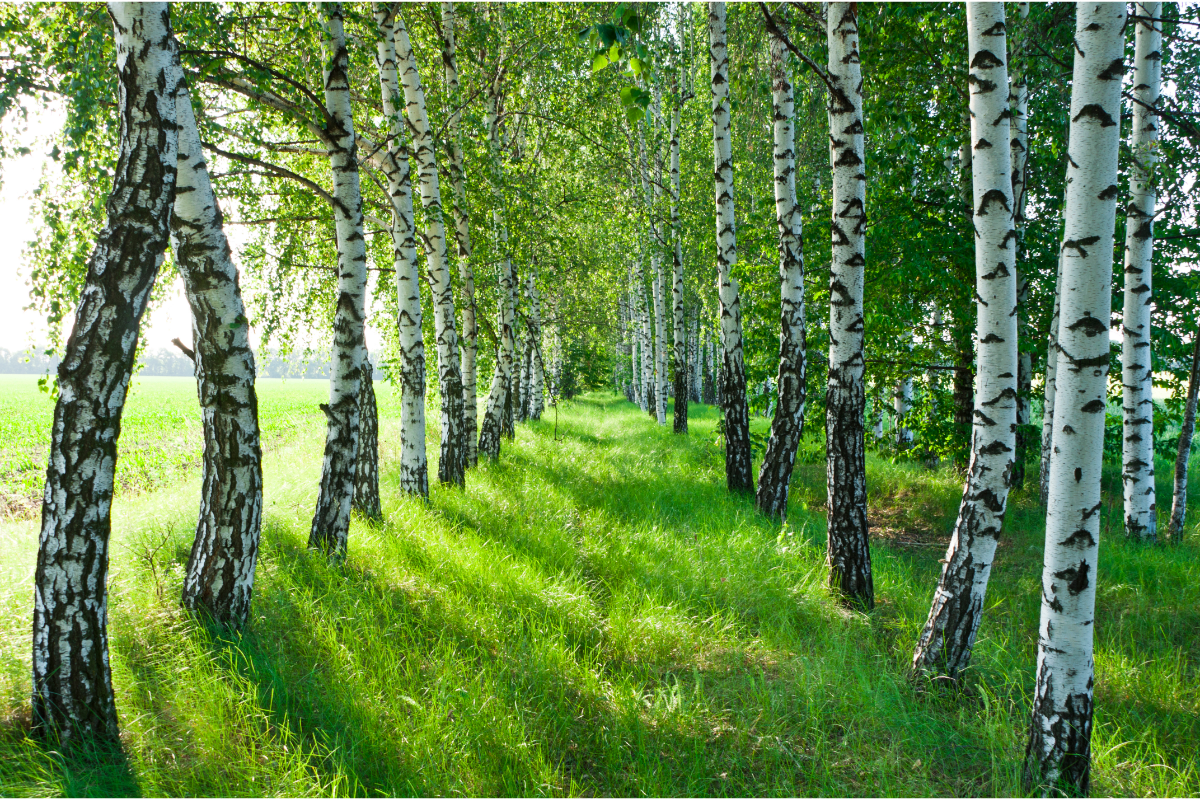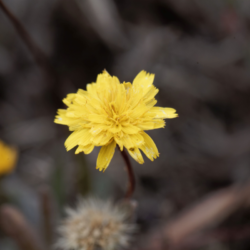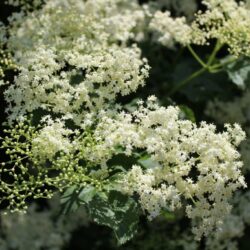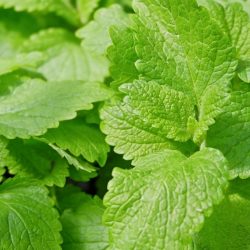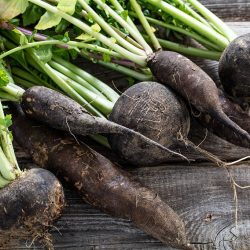The adjective birch is attributed to the silvery sheen of its papery bark. The birch is a particularly typical tree species in Eurasia. Although commonly grown as an ornamental tree, it is no less a host to young woods, steep acid soils, stony soils and sandy soils. Surprisingly, birch sap harvested in early spring has the advantage of cleansing the body of impurities and toxins accumulated over the winter. This vital fluid – sap – provides both physical and mental flexibility. It is the life force of trees, filled with earthly and celestial elements, bringing energy to winter outings.
Birch, whose botanical name is Betula lenta (alleghaniensis), belongs to the Betulaceae family. The productive organs are wood and bark.
A little history
The first therapeutic references to birch were made by a “northern” lady: Hildegarde of Bingen. In the 12th century, she said that she used the sap of Birka (now birke in German) to treat fluid retention and urinary problems, as well as the buds: heated in the sun or near a fire, then applied to the skin, they cured certain dermatological conditions (pustules, redness, etc.). Hildegarde was also the first to note the use of flowers for their healing properties.
Two centuries after her, another German, Konrad de Megenberg (1309-1374), provided further information about the birch tree. In a book, the canon of Regensburg praised birch “water”, i.e. its sap, as a diuretic and urinary anti-lithiasis agent. He also recommended the sap for treating mouth ulcers and ephelides (freckles).
In the 19th century, the Austrian doctor Wilhelm Winderwitz demonstrated the undeniable and powerful diuretic effects of birch leaves when treating patients suffering from oedema. He observed a considerable increase in the volume of urine produced and a drop in albumin levels, without any kidney irritation. A century later, Henri Leclerc further clarified the therapeutic profile of birch, using it on patients with cellulitis and excessive levels of uric acid and cholesterol in the blood. Over time, the toxins are resorbed and the fibrocongestive nodules melt away.
The word birch comes from the Sanskrit bhurga, meaning “bark on which to write”, as well as from the Gallic beto or the Latin betula, which, according to Pliny, means “Gallic tree of remarkable whiteness and fineness”.
Mature trees of sufficient size are felled. The bark is then removed and subjected to dry distillation or “pyrogenation”. Sometimes branches and roots are also added. The resinous oil obtained by pyrogenation is black and fragrant.
Birch bark, a writing aid…
Despite its fragile appearance, birch bark is extremely durable, thanks to the tars it contains. This resistance to decay has enabled Russian archaeologists to make some major historical discoveries in the subsoil of Novgorod, a town 400 km east of Moscow. Starting in 1951, hundreds of intact birchbark documents were recovered from several metres below ground, from archaeological layers dating from the 10th to the 14th century.
The texts are engraved on the inside of the bark with a stylus. Written in Old Russian, these texts have made a considerable contribution to our knowledge of this period. In the Nordic countries, the birch played a role as a medium of communication in the same way as papyrus or the palm tree in warmer countries.
Birch sap…
“From the first days of March, a medium-sized birch tree is selected in the forest. Using a spiral as big as a typewriter pen, a horizontal hole is made 4 feet above the ground. In this hole, which is about 5 cm deep, a straw pipe is placed, 3 or 4 fingers long, to act as a conductor for the sap that will flow out… a sweet, slightly sugary liquor…” This text by Dr Percy (1822) speaks for itself!
Birch sap is used to make a drink, a kind of beer or wine, sometimes enriched with blackcurrant leaves, lemon or orange peel…
“The sap from the trunk of the birch is, of all plant substances, the one that provides the best means of imitating the Champagne wine that is adulterated in London and Hamburg with various berries”, according to Rosier’s Dictionnaire d’Agriculture (1821).
In Quebec
Quebec is one of the places with the most yellow birch in the world. This species is found mainly in the southern forest zone in the south of the province. Found mainly in forested areas, yellow birch grows alongside species such as sugar maple, beech, basswood and certain conifers, including white pine and balsam fir.
When fully mature, the yellow birch is distinguished by its golden, satiny bark, which frays into thin, curly strips. Its twigs taste like wintergreen.
The birch is a sublime purifier, an incomparable cleaner (in Central Europe, don’t they make excellent brooms from birch twigs?) and it has the advantage of being gentle on the body, although its use should be avoided in cases of serious heart or kidney disease.
As far as birch sap is concerned, it has long been harvested in early spring and drunk as a fountain of youth. It cleanses the body of impurities and toxins accumulated over the winter. An amazing regenerant, it can be used by everyone (unless contraindicated). This vital liquid – the sap – provides both physical and psychological suppleness. It is the living force of the tree, charged with terrestrial and celestial elements, which brings vitality to the winter.
The yellow birch is also the emblematic tree of Quebec.
In the Haute-Mauricie region, patches of yellow birch are found in the heart of the white birch fir forest beyond the species’ continuous range. Palaeoecological analyses of a peat bog and forest humus taken from an island were carried out in order to reconstruct the post-glacial history of the vegetation and obtain information on the long-term dynamics of the yellow birch. 7,000 years ago, yellow birch was probably more abundant and its continuous range would have extended further north than it does today. During the late Holocene, a regional phenomenon of “borealisation” occurred, marked by a resurgence of certain conifers to the detriment of other species such as the yellow birch. Today’s patches of forest are thought to be remnants of this ancient expansion. They should be protected, as the yellow birch is an important component of biodiversity and its survival appears to be compromised in response to environmental change.
Hildegard of Bingen
The written therapeutic history of the birch is not as old as one might think. As a predominantly northern tree, ancient Greek and Roman civilisations didn’t particularly notice it. Only Pliny might have considered the tree to have originated in Gaul. The first therapeutic references to the birch were made by a “northern” lady: Hildegarde of Bingen.
In the 12th century, she said that she used the sap of Bircka(birke today in German) (to treat fluid retention and urinary problems), as well as the buds: heated in the sun or near a fire, then applied to the skin, they cured certain dermatological conditions (pustules, redness, etc.). Hildegarde was also the first to note the use of flowers for their healing properties.
Konrad de Megenberg
Two centuries after Hildegard, another German, Konrad de Megenberg (1309-1374), provided additional information about the birch tree. In a work entitled Buch von den natürlichen Dingen (probably written in 1349 or 1350), the canon of Regensburg praised birch “water”, i.e. its sap, as a diuretic and urinary antilithic. He also recommended the sap for treating mouth ulcers and ephelides (freckles).
Strangely enough,Matthiole took part in this eulogy: although he lived too far south, he was familiar with what he called the “nephritic tree”, probably from reading some German books on the subject, which is quite possible, given that what he wrote recalls what Konrad de Megenberg said : “If you pierce the trunk of a birch tree with an auger, a large quantity of water comes out, which has the great property and virtue of breaking the stone (lithiasis) in both the kidneys and the bladder if you continue to use it. This water removes spots from the face and makes the skin and flesh beautiful. If you wash your mouth with it, it cures the ulcers inside”.
Under Napoleon I
Either the information comes to us, as is the case here with Matthiole, or we go to it. This is what Pierre-François Percy, chief surgeon in Napoleon I‘s armies, did. He noted the popular use of birch sap, which was widespread throughout northern Europe during the Russian campaigns. Percy’s main point was that it was used to combat rheumatic diseases, bladder problems and the remnants of gout.
It is true that Russian folk medicine and Siberian healers had long recommended not only sap but also birch leaves and buds to relieve rheumatic pain. But it would be incomplete to stop there, as birch therapy is much more sophisticated: “People living in northern Eurasia have a tradition of whipping themselves with birch branches while alternating between steam baths and dry heat baths, before rubbing themselves with snow”.
This prefigures the birch as a great cleanser in the elimination of toxins. This is confirmed by the proverbial Russian wisdom that the birch is a cleanser via the sauna, and a healer – which we have no doubt it is. As well as giving light through the torches it provides, it is also said in Russia to muffle cries, which cannot be understood without a few explanatory details: from the bark of this tree, we obtain a kind of tar-like resinous oil with which we anoint wagon wheels to prevent them from rubbing and ‘squeaking’, which is quite funny since the birch prevents us from doing the same with our own joints when they are prone to osteoarthritis, for example.
Contemporary period
In the 19th century, the Austrian doctor Wilhelm Winderwitz experimentally demonstrated the undeniable and powerful diuretic effects of birch leaves when treating patients suffering from oedema. He observed a considerable increase in the volume of urine released and a drop in albumin levels, without any kidney irritation. A century later, Henri Leclerc further clarified the therapeutic profile of birch, using it on patients with cellulitis and excessive levels of uric acid and cholesterol in the blood. Eventually, the toxins are reabsorbed and the fibro-congestive nodules melt away.
Conversely, the hard bark of the birch is used to extract a resin, birch tar, which was used as far back as the Neolithic period (and even earlier) to repair vessels with cracks and fissures. Today, it is still used to finish, perfume and protect Russian leather. The protective, rot-proof properties of birch bark can also be used to make utensils and canoes, and to cover huts. It also makes an excellent firelighter, and is effective even when wet, thanks to its high resin content.
Dr Bach’s theory
The flowers of the birch tree are used to make a floral elixir that Dr Bach would not have disowned: it has nevertheless been prepared according to his method. Because the tree was made to “speak” about its character, it was possible to deduce its areas of action: so we shouldn’t be surprised to learn that this elixir is intended for people who are overly sclerotic in their behaviour, rigid like birch bark, solid in their positions, sometimes too much so like the “paper” made from this bark, whose resistance is explained by the tar it contains.
What seems to be a flaw in some people can also be extremely useful, because in other cases, without this tarry bark, vast swathes of history would be completely inaccessible to us. As we have seen, Hildegard called the birch bircka. Today’s German birke and English birch are obviously reminiscent of this ancient name given to the birch tree, which, according to etymology, comes from a much older and more distant root: in Sanskrit, the word bhurga (6), which designates the birch tree, also means precisely “tree whose bark is used as a medium for writing”.
Etymology
So let’s give thanks to the tar in birch bark, because a major event has helped to establish the etymology associated with this tree: its “resistance to rot” has enabled Russian archaeologists to make some major historical discoveries in the subsoil of Novgorod, a town 400 km east of Moscow.
Hundreds of intact birchbark documents were recovered from 1951 at a depth of several metres, in archaeological layers dating from the 10th to the 14th century. The texts are engraved on the inside of the bark with a stylus. Written in Old Russian, these texts have made a considerable contribution to our knowledge of this period. In the Nordic countries, the birch played a role as a medium of communication in the same way as the papyrus or the palm tree in warmer countries. Witness the signs engraved on its bark, the birch also appeared among the Celts not as a medium but as content.
Origin and uses of birch
Birch(Betula alba, B. pendula, B. pubescens) is widely used in phytotherapy in Northern Europe. Its characteristically shiny bark inspired its name (in Sanskrit, bhurga means “that which can be written on”). Indeed, birch bark has long been used as paper.
In phytotherapy, we use the dried young leaves, the sap (which can be collected several litres a day in spring!), the buds and sometimes the bark. The leaves are distilled to produce birch oil, which is used on the skin.
Today, birch is mainly used as a natural diuretic. It increases the volume of urine and helps treat urinary tract infections. It is also used to help eliminate urinary stones, whether in the kidneys or bladder.
Other traditional uses of birch :
Birch leaves contain anti-inflammatory substances and are often used as an adjunct treatment for osteoarthritis. Decoctions of these leaves are traditionally used to treat various skin conditions such as eczema and psoriasis. In Russia, freshly crushed leaves are applied directly to warts.
Pharmacological properties of birch leaves and bark
- Methyl salicylate is widely used to treat rheumatic pains, coronary spasms and venous circulation.
- Birch leaves are rich in betulic acid, flavonoids(hyperoside and quercetin) and vitamin C. It seems to be the high potassium content of the leaves that produces the diuretic effect for which they are traditionally used.
According to the EMA, birch has traditionally been used to increase the volume of urine released in order to flush the urinary tract, as an adjuvant treatment for minor complaints. The German Commission E recognises its use as a urinary tract irrigation therapy for bacterial infections and kidney stones, and to treat rheumatism. For ESCOP, birch promotes irrigation of the urinary tract, particularly in cases of inflammation and kidney stones, and as an adjuvant treatment for bacterial urinary infections.
As with white broth, boldo,angelica and many other plants, birch is one of the plants whose traditional use has been validated in practice. Over the last decade, an increasing number of publications have focused on secondary pharmacopoeia plants such as birch, which means that they are gradually moving up the range of plant pharmacopoeia.
Renal properties
Birch leaves are diuretic, a property attributed to their many flavonoids and high potassium content. Birch bark and sap therefore have the same renal elimination properties. Birch sap is antispasmodic and antioxidant.
Birch is also said to have hypo-uricaemic activity, linked to its strong potential to inhibit xanthine oxidases.
Metabolic properties
Betulin, abundant in birch bark, improves obesity induced by a fatty diet in vivo, reduces hyperlipidaemia and insulin resistance and reduces the number of atherosclerotic plaques. This compound acts by specifically inhibiting the maturation of sterol regulatory element-binding proteins (SREBPs), the main transcription factors activating the expression of genes involved in the biosynthesis of cholesterol, fatty acids and triglycerides. In fact, betulin activity leads to a reduction in the biosynthesis of cholesterol and fatty acids.
Betulin has therefore been shown to be effective in combating metabolic syndrome.
Anti-inflammatory and healing properties:
Birch bark extract has been clinically proven to improve wound healing. This activity is effectively linked to its pentacyclic triterpenes, including betulin, which treat the inflammatory phase of the healing process by temporarily up-regulating several pro-inflammatory mediators. They also improve keranocyte migration, which is essential in the second phase of wound healing.
In vivo studies have demonstrated the anti-inflammatory effect of birch extracts on a model of inflammation induced by 12-O-tetradecanoylphorbol-13-acetate (TPA). Betulin is also thought to be a febrifuge.
In humans, topical application of birch bark extract has been shown to be effective in the treatment of actinic keratosis.
Anti-tumour properties
Betulinic acid is cytotoxic in vitro and in vivo; it selectively inhibits the growth of human melanoma cells and induces apoptosis.
This apoptotic activity, also demonstrated in vitro on neuro-ectodermal tumour cells, involves activation of the caspase pathway as well as activation of mitochondria and release of mitochondrial apoptogenic factors. Betulinic acid has also shown activity on leukaemia cells in vitro.
It should be noted that betulinic acid is not very hydrophilic, which may limit the application of its properties, as this characteristic results in low bioavailability in the body. It is likely that bioavailability is improved when this substance is incorporated into the plant’s totum. In addition, adding a sugar moiety to betulinic acid to transform it into a glycoside improves its hydrophilicity, which could improve its bioavailability in vivo, given that this derivative has demonstrated anticancer activity in vitro against two cancer cell lines (lung and colon).
Anti-infective properties
Certain betulinic acid amides potently and selectively inhibit HIV-1 and prevent the virus from entering cells, thereby delaying its progression.
The pentacyclic triterpenes contained in birch bark extract inhibit the early stage of herpes simplex virus type 1 replication.
Betulinic acid inhibits the growth of Staphylococcus aureus and Escherichia coli.
Main therapeutic indications for birch leaves and bark
In relation to their renal properties:
- Improving renal elimination, particularly in cases of urinary tract infections caused by Escherichia coli and inflammatory conditions of the urinary tract
- Prevention of uric lithiasis, uricoelimination and prevention of gout attacks, particularly in the case of hyperuricaemia.
Links with their metabolic and hepatic properties:
- Metabolic syndrome with hyperuricaemia and dyslipidaemia
- Metabolic overload with insulin resistance
- Improvement of hepatic elimination functions, in seasonal cures (spring)
In connection with their anti-inflammatory, anti-infectious and cytotoxic properties:
- Skin inflammation caused by bacteria(Staphylococcus aureus) or viruses (herpes)
- Uricoelimination in uric lithiasis or gouty disease
- Adjuvant treatment in cancerous conditions, as a complement to standard therapies
Are there any precautions to be taken when using birch?
Contraindications :
- Contraindicated in pregnant or breast-feeding women and children under 12 years of age.
- This plant is not recommended in cases of allergy to aspirin and salicylates.
Side effects :
- Taking birch may trigger a cross-allergy to celery and vice versa.
- Given its diuretic activity, it should not be used during an attack of renal colic to avoid aggravating the symptoms.
Drug interactions: The diuretic effects of plants or synthetic medicines with similar properties are potentiated.
Usual doses :
Use in herbal tea
- Use 2 to 3 g of dried birch leaves per cup of boiling water.
- Drink two to three cups a day, preferably 30 minutes before meals.
- Continue the treatment for two to four weeks.
Water recommendations: Given the diuretic effect of birch, drink at least two litres of water a day throughout the cure.
Birch sap
- There is no precise recommended dosage for birch sap.
- Enjoyed as a refreshing drink, the sap becomes slightly fizzy when stored in the bottle.
Other plants used to aid urinary elimination:
Traditional herbal medicine also uses the following other diuretic plants:
- Artichoke (Cynara scolymus)
- Buchu (Agathosma betulina)
- Cherry (Prunus avium)
- Orthosiphon (Orthosiphon stamineus)
- Hawkweed (Hieracium pilosella)
- Dandelion (Taraxacum officinale)
- Meadowsweet (Filipendula ulmaria)
- Tea (Camellia sinensis)
What the health authorities think
THE EMA
The European Medicines Agency considers the use of birch to be “traditionally established” for “increasing the volume of urine released in order to flush the urinary tract, as an adjuvant in the treatment of moderate pain of the urinary tract”. It recommends reserving use for adults and children over the age of twelve.
THE E
Commission E of the German Ministry of Health recognises the use of birch as “an irrigation therapy for the urinary tract in the case of bacterial infections and kidney stones; birch may also be useful in the treatment of rheumatism”.
ESCOP
European Scientific Cooperation on Phytotherapy, considers that birch promotes “irrigation of the urinary tract, particularly in cases of inflammation and kidney stones, and as an adjunct treatment for bacterial urinary tract infections”.
Medical bibliographical sources and clinical trials:
- Bruneton J., Pharmacognosie. Phytochemistry and medicinal plants, Tec & Doc, 1999
- Havlik J. et al, Xanthine oxidase inhibitory propesties of Czech madicinal plants, J Ethnopharmacol, 2010
- Tang J.J et al, Inhibition of SREBP by a small molecule, betulin; improves hyperlipidemia and insulin resistance and reduces atherosclerotic plaques; Cell Metab, 2011

